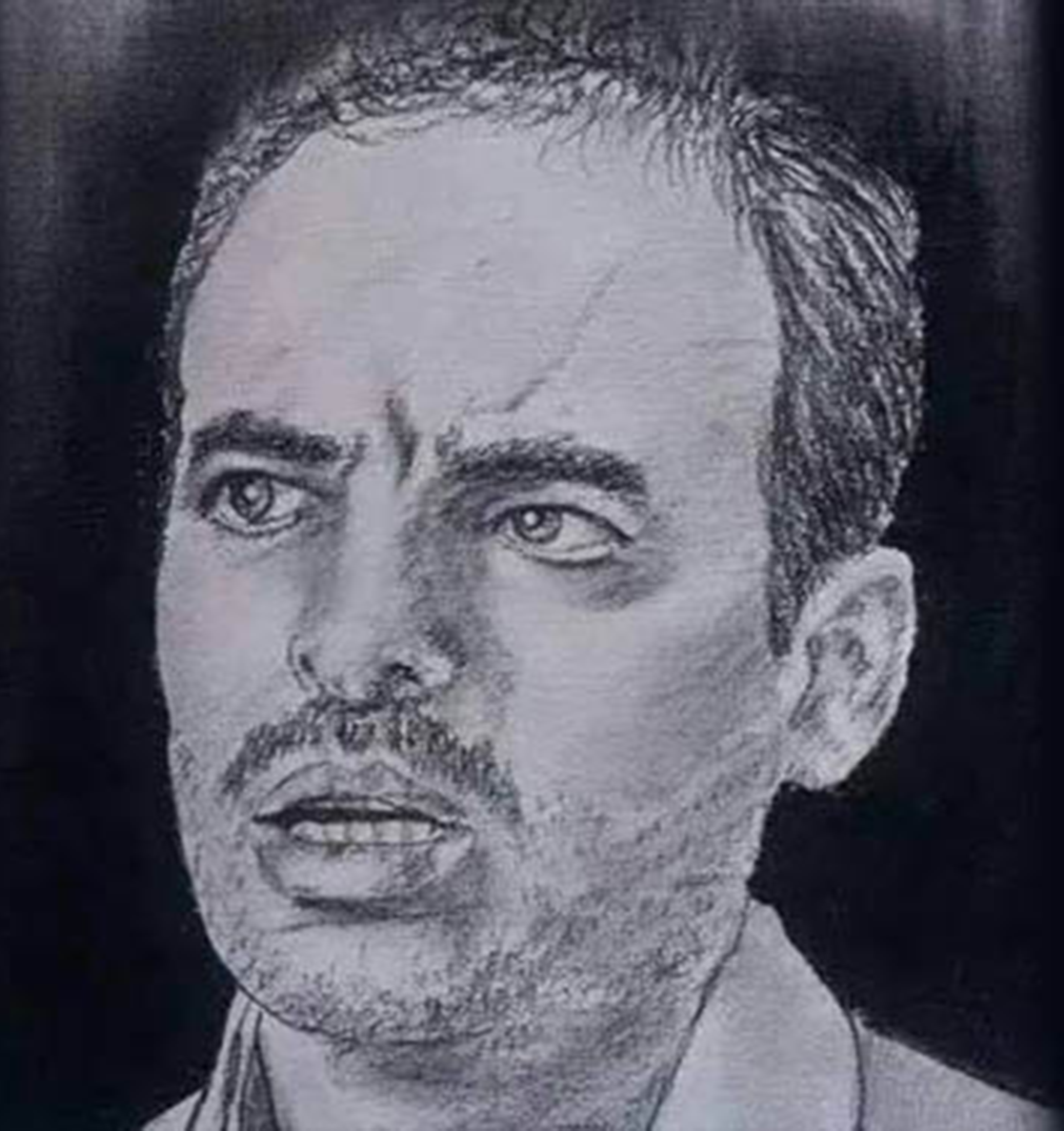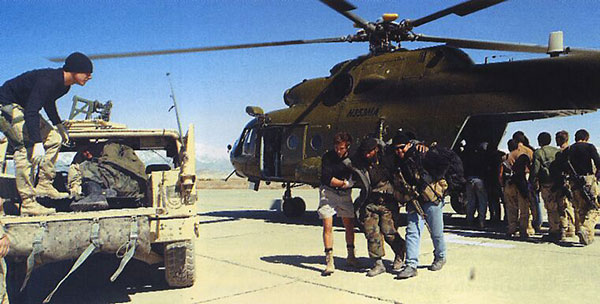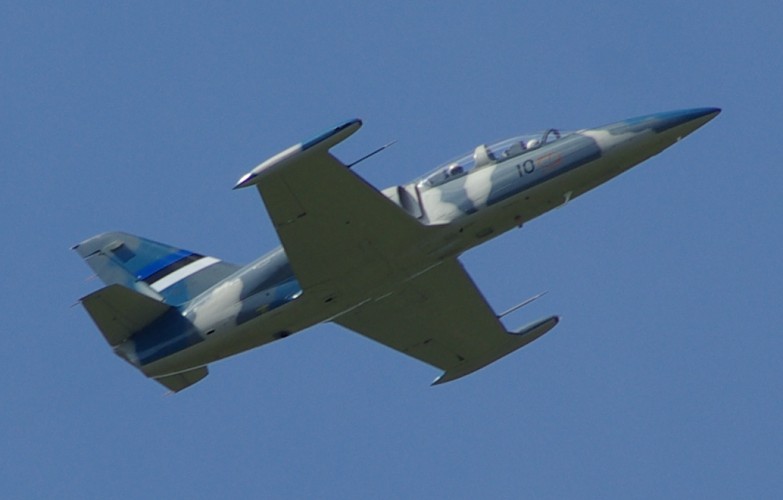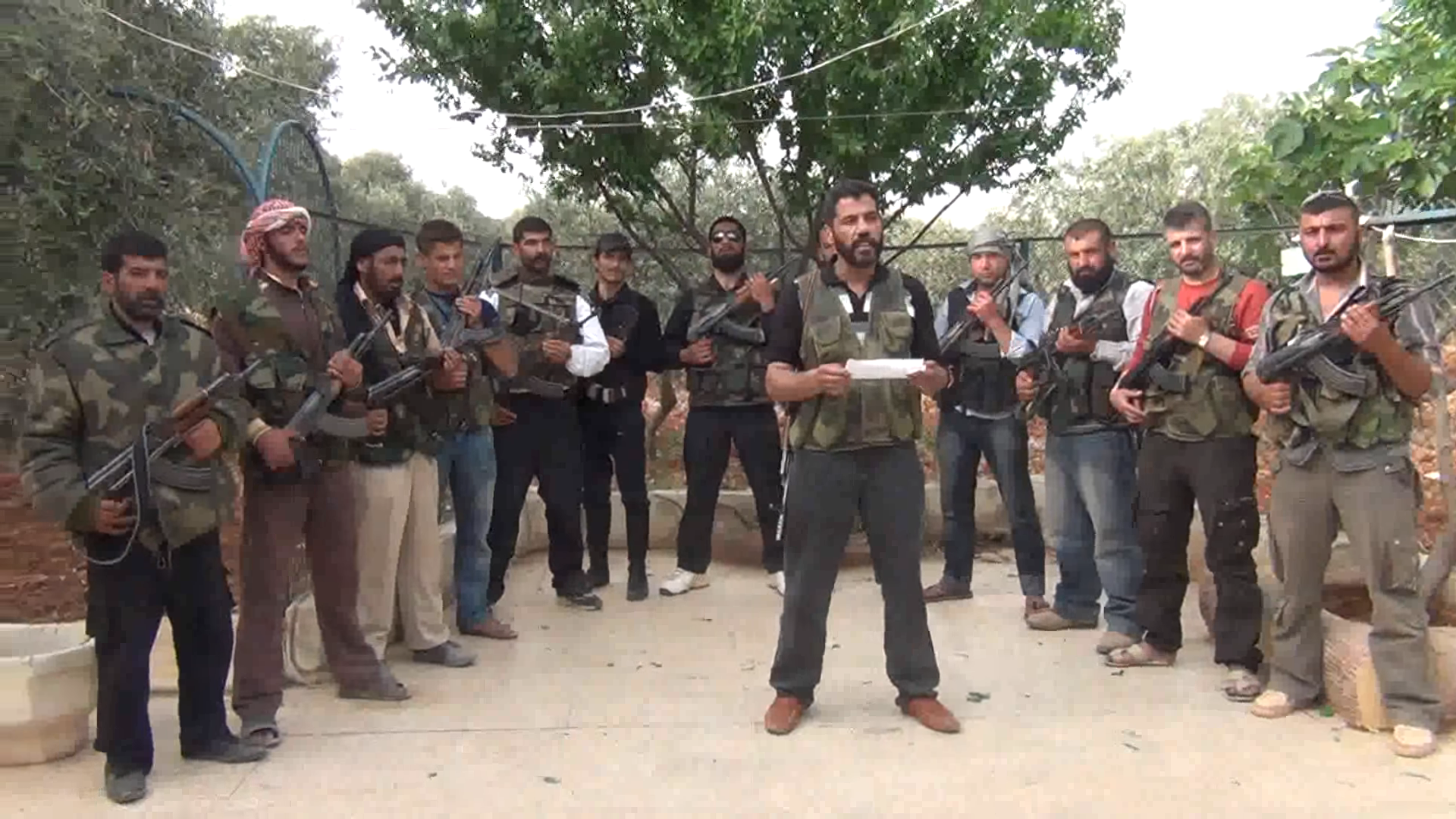|
2012 Aleppo Governorate Clashes
The 2012 Aleppo Governorate clashes were a series of battles as part of the early insurgency phase of the Syrian civil war in the Aleppo Governorate of Syria. The clashes began following the twin bombings in Aleppo city on 10 February 2012, which were conducted by the jihadist anti-government organisation, the Al-Nusra Front. Over the next five months, major clashes left large parts of the rural countryside under rebel control, with the capital of the province, Aleppo city, still being firmly under government control. On 19 July, rebel forces stormed the city and a battle for control of Syria's largest city and economic hub had begun. Background There were anti-government protests in Aleppo, reported since 13 April 2011. However, the city itself was mostly peaceful and spared the violence of the war, unlike the rest of the country, being a government stronghold for the better part of the first year of the conflict. Anti-government activists called for a huge turnout on 30 Ju ... [...More Info...] [...Related Items...] OR: [Wikipedia] [Google] [Baidu] |
Early Insurgency Phase Of The Syrian Civil War
The early insurgency phase of the Syrian Civil War lasted from late July 2011 to April 2012, and was associated with the rise of armed oppositional militias across Syria and the beginning of armed rebellion against the authorities of the Syrian Arab Republic. Though armed insurrection incidents began as early as June 2011 when rebels killed 120–140 Syrian security personnel, the beginning of organized insurgency is typically marked by the formation of the Free Syrian Army (FSA) on 29 July 2011, when a group of defected officers declared the establishment of the first organized oppositional military force. Composed of defected Syrian Armed Forces personnel, the rebel army aimed to remove Bashar al-Assad and his government from power. This period of the war saw the initial civil uprising take on many of the characteristics of a civil war, according to several outside observers, including the United Nations Commission on Human Rights, as armed elements became better organized an ... [...More Info...] [...Related Items...] OR: [Wikipedia] [Google] [Baidu] |
People's Protection Units
The People's Defense Units (YPG), (YPG) ; ar, وحدات حماية الشعب, Waḥdāt Ḥimāyat aš-Šaʽb) also called People's Protection Units, is a mainly-Kurdish militia in Syria and the primary component of the Syrian Democratic Forces (SDF). The YPG mostly consists of ethnic Kurds, but also includes Arabs and foreign volunteers; it is closely allied to the Syriac Military Council, an Assyrian militia. The YPG was formed in 2011. It expanded rapidly in the Syrian Civil War and came to predominate over other armed Syrian Kurdish groups. A sister militia, the Women's Protection Units (YPJ), fights alongside them. The YPG is active in the Autonomous Administration of North and East Syria (Rojava), particularly in its Kurdish regions. In early 2015, the group won a major victory over the so-called Islamic State (IS) during the siege of Kobanî, where the YPG began to receive air and ground support from the United States and other Combined Joint Task Force – ... [...More Info...] [...Related Items...] OR: [Wikipedia] [Google] [Baidu] |
Early Insurgency Phase Of The Syrian Civil War
The early insurgency phase of the Syrian Civil War lasted from late July 2011 to April 2012, and was associated with the rise of armed oppositional militias across Syria and the beginning of armed rebellion against the authorities of the Syrian Arab Republic. Though armed insurrection incidents began as early as June 2011 when rebels killed 120–140 Syrian security personnel, the beginning of organized insurgency is typically marked by the formation of the Free Syrian Army (FSA) on 29 July 2011, when a group of defected officers declared the establishment of the first organized oppositional military force. Composed of defected Syrian Armed Forces personnel, the rebel army aimed to remove Bashar al-Assad and his government from power. This period of the war saw the initial civil uprising take on many of the characteristics of a civil war, according to several outside observers, including the United Nations Commission on Human Rights, as armed elements became better organized an ... [...More Info...] [...Related Items...] OR: [Wikipedia] [Google] [Baidu] |
Mil Mi-17
The Mil Mi-17 ( NATO reporting name: Hip) is a Soviet-designed Russian military helicopter family introduced in 1975 (Mi-8M), continuing in production at two factories, in Kazan and Ulan-Ude. It is known as the Mi-8M series in Russian service. The helicopter is mostly used as a medium twin-turbine transport helicopter, as well as an armed gunship version. Development Developed from the basic Mi-8 airframe, the Mi-17 was fitted with the larger Klimov TV3-117MT engines, rotors, and transmission developed for the Mi-14, along with fuselage improvements for heavier loads. Optional engines for "hot and high" conditions are the 1545 kW (2070 shp) Isotov TV3-117VM. Recent exports to China and Venezuela for use in high mountains have the new Klimov VK-2500 version of the Klimov TV3-117 engine with FADEC control. The designation Mi-17 is for export; Russian armed forces call it Mi-8MT. The Mi-17 can be recognized because it has the tail rotor on the port side instead of the s ... [...More Info...] [...Related Items...] OR: [Wikipedia] [Google] [Baidu] |
Aero L-39 Albatros
The Aero L-39 Albatros is a high-performance jet trainer designed and produced in Czechoslovakia by Aero Vodochody. It is the most widely used jet trainer in the world; in addition to performing basic and advanced pilot training, it has also flown combat missions in a light-attack role. Unusually, the aircraft never received a NATO reporting name. The L-39 Albatros was designed during the 1960s as a successor to the Aero L-29 Delfín, an early jet-powered principal training aircraft. Performing its maiden flight on 4 November 1968, it became the first trainer aircraft in the world to be equipped with a turbofan powerplant. Quantity production of the L-39 Albatros proceeded in 1971; one year later, it was formally recognized by the majority of the Warsaw Pact countries as their preferred primary trainer. Accordingly, thousands of L39s would be produced for various military customers in Eastern Europe. Additionally, it was exported to a range of countries across the world both as ... [...More Info...] [...Related Items...] OR: [Wikipedia] [Google] [Baidu] |
Mikoyan-Gurevich MiG-23
The Mikoyan-Gurevich MiG-23 (russian: Микоян и Гуревич МиГ-23; NATO reporting name: Flogger) is a variable-geometry fighter aircraft, designed by the Mikoyan-Gurevich design bureau in the Soviet Union. It is a third-generation jet fighter, alongside similar Soviet aircraft such as the Su-17 "Fitter". It was the first Soviet fighter to field a look-down/shoot-down radar, the RP-23 Sapfir, and one of the first to be armed with beyond-visual-range missiles. Production started in 1969 and reached large numbers with over 5,000 aircraft built, making it the most produced variable-sweep wing aircraft in history. Today the MiG-23 remains in limited service with some export customers. The basic design was also used as the basis for the Mikoyan MiG-27, a dedicated ground-attack variant. Among many minor changes, the MiG-27 replaced the MiG-23's nose-mounted radar system with an optical panel holding a laser designator and a TV camera. Development The MiG-23's predec ... [...More Info...] [...Related Items...] OR: [Wikipedia] [Google] [Baidu] |
Sukhoi Su-17
The Sukhoi Su-17 (''izdeliye'' S-32) is a variable-sweep wing fighter-bomber developed for the Soviet military. Its NATO reporting name is "Fitter". Developed from the Sukhoi Su-7, the Su-17 was the first variable-sweep wing aircraft to enter Soviet service. Two subsequent Sukhoi aircraft, the Su-20 and Su-22, have usually been regarded as variants of the Su-17. The Su-17/20/22 series has had a long career and has been operated by many other air forces of including the Russian Federation, other former Soviet republics, the former Warsaw Pact, countries in the Arab world, Angola and Peru. Development Shortly after the Su-7 fighter-bomber was put into service, the Sukhoi Design Bureau was ordered to develop a deep modernization program for the aircraft in the early 1960s. The program would be aimed primarily at updating on-board avionics and the takeoff/landing performance characteristics. The concept of variable-geometry wings - something gaining wider attention at that tim ... [...More Info...] [...Related Items...] OR: [Wikipedia] [Google] [Baidu] |
Syrian Liberation Army
The Idlib Martyrs' Brigade ( ar, لواء شهداء إدلب, ''Liwa Shuhada Idlib'') was an armed rebel group that fought against the Syrian government in the Idlib Governorate of Syria. It first operated under the name Syrian Liberation Army ( ar, جيش التحرير السوري), but had renamed itself by the end of April 2012. It was a loose coalition of localized forces, mostly composed of armed Syrian civilians who joined the uprising. History The group was based in Idlib Governorate and was primarily concerned with trying to expel government forces from the governorate, with the Idlib Martyrs' Brigade claiming that they, and not the better equipped Free Syrian Army, are doing the majority of the fighting in Idlib province. The brigade only appears to be active in Idlib province. One of the group's primary problems was the fact that it was incredibly difficult for it to secure weapons and ammunition. This in turn severely hampered its recruitment and its ability to ca ... [...More Info...] [...Related Items...] OR: [Wikipedia] [Google] [Baidu] |
Conquest Brigade
, war = the Syrian Civil War , image = Conquest Brigade logo.jpg , image_size = 200px , caption = Logo of the militia , active = 2012 – ''present'' , ideology = Sunni Islamism *Salafi jihadism Syrian nationalism , leaders = 1st Lt. Rifaat Khalil Maj. Anas Ibrahim () Col. Haytham Darwish () Muhammad Hijazi () Capt. Ismail Nadef () Abu Yahya Qalandar , clans = , headquarters = Tell Rifaat (2012–16) , area = Northern Syria *Aleppo Governorate *Raqqa Governorate () *Hasakah Governorate () , size = , partof = Free Syrian Army * TFSA's 3rd Legion Syrian Islamic Liberation Front Fatah Halab () Ahrar al-Sham Levant Front , predecessor = , successor = , split = , allies = Al-Tawhid Brigade Al-Nusra Front Jabhat al-Akrad , opponents = Syrian Democratic Forces Hezbollah , battles = Syrian Civil W ... [...More Info...] [...Related Items...] OR: [Wikipedia] [Google] [Baidu] |
Al-Tawhid Brigade
The al-Tawhid Brigade ( ar-at, لواء التوحيد, Liwa al-Tawhid, lit=Brigade of monothiesim), named after Tawhid, the "oneness of God," but often mistranslated as Unity Brigade, was an armed Islamist insurgent group involved in the Syrian Civil War. The al-Tawhid Brigade was formed in 2012. Reportedly backed by Qatar, al-Tawhid was considered one of the biggest groups in northern Syria, dominating much of the insurgency around Aleppo. Affiliated with the Muslim Brotherhood, in late 2013 it co-signed a joint statement calling for Sharia law and rejecting the authority of the Syrian National Coalition. Originally, al-Tawhid was composed of four subunits, the ''Mountain Knights Brigade'', the ''Darat Izza Brigade'', the ''Free North Brigade'', and the ''Aleppo Shahba Battalions''. Its leader Abdul Qader Saleh was killed in November 2013 in a devastating Syrian Air Force airstrike. Its northern branch, the ''Free North Brigade'', was in 2014 reportedly "superseded" by ... [...More Info...] [...Related Items...] OR: [Wikipedia] [Google] [Baidu] |
Shabiha
''Shabiha'' (Levantine Arabic: ', ; also romanized ''Shabeeha'' or ''Shabbiha''; ) is a term for state sponsored militias of the Syrian government. However, in the Aleppo Governorate the term Shabiha is used frequently to refer to pro-Assad Sunni tribes such as al-Berri, al-Baggara, al-Hasasne and al-Zeido. In the city of Aleppo itself it was led by the powerful Sunni Arab al-Berri tribe. The word became common in the 90s, when it was being used to refer to "thugs" who work with the government and often drove Mercedes-Benz S-Class and gave their guards the same car; that specific car model was nicknamed Shabah (Ghost) in many Arabic countries which led to its drivers being called Shabeeh The Syrian opposition stated that the ''shabiha'' are a tool of the government for cracking down on dissent. The Syrian Observatory for Human Rights has stated that some of the ''shabiha'' are mercenaries. Before the Syrian civil war According to defectors privately interviewed by ''The Star' ... [...More Info...] [...Related Items...] OR: [Wikipedia] [Google] [Baidu] |
Military Intelligence Directorate (Syria)
The Military Intelligence Directorate ( ar, شعبة المخابرات العسكرية, translit=Shu'bat al-Mukhabarat al-'Askariyya), is the military intelligence service of Syria. Although its roots go back to the French mandate period (1923–1943), its current organization was established in 1969.Conflict Studies Journal at the University of New Brunswick . Lib.unb.ca. Retrieved on 19 October 2010. Its predecessor organisation was called the '''' (the Second Bureau). It is headquartered at the |









